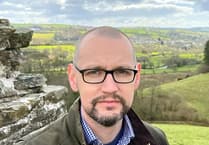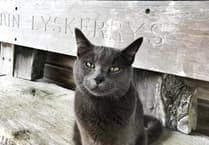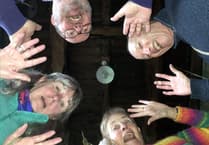World leaders will be greeted by a blaze of purple as they descend on the G7 summit this week – thanks to a National Trust farm that has embraced new practices.
Changes in land management at Godrevy Farm on the south west Cornish coast are resulting in benefits to nature with the introduction of the super pollinating Phacelia into its arable and green crops. As well as attracting wildlife, this plant breaks down and acts as fertile manure for follow on crops.
Visible from Carbis Bay – where leaders meet this week – the farm is a perfect example of how nature and farming can work hand-in-hand to help halt species decline, improve levels of biodiversity and tackle climate change.
It is also a great example of how farming can be sustainable, productive and profitable for farmers, says the National Trust.
Three years ago the conservation charity worked with the tenants, to make changes which aligned more with the Trust’s ambitious plans to help restore nature and reverse the decline in wildlife on the land in its care, and to ensure that the land was farmed in a way that was more sympathetic to its coastal setting and the surrounding Sites of Scientific Interest (SSSIs).
Changes included planting wild seed margins to bring more wildlife back to the heart of the farm, and to provide wildlife rich corridors linking to the surrounding coastal habitats; restoring flower rich meadows, planting trees and making changes to the management of the Cornish hedges that bisect the farm.
The striking purple Phacelia crop[2] sown across 51 acres of the 175 acre farm will be seen by visitors to the area over the coming weeks.
Phacelia improves soil condition by helping to increase stores of soil carbon and creating better soil structure, and is a rich food source particularly for invertebrates such as butterflies and bees.
Steve Sudworth, lead ranger for the National Trust says: “It is vital that we halt the alarming decline in nature. Although our work at Godrevy might seem small, when considering the huge scale of the issues we face nationally and globally on balancing food production and the nature and climate crisis, it’s changes like these that can start to provide solutions that deliver for nature, climate and people.”
Godrevy headland has always been a great place for wildlife with many species of birds, reptiles and invertebrates, says Steve, and since making changes to its land management on the farm, the Trust has seen a rapid improvement in biodiversity. There have been increased sightings of chough and silver-studded blue butterflies and a marked increase in bee species and breeding birds is expected in coming years.
“The purple haze of Phacelia across the farm fields in June is a great way for our visitors to see how our land management is changing,” said Steve.
“It gives a dramatic splash of colour to the area, which on closer inspection is buzzing with insects and swooping swallows. Godrevy is and always has been an important place for people to visit and connect with the landscape and natural world and we are very excited to bring more nature into people’s lives when they visit here.”
Rosie Hails, Director of Nature and Science at the National Trust said: “We are in a climate emergency. Food production and the farming industry is critically important for helping in this fight.
“We believe farmers have a vital role in producing safe and sustainable supplies of food, but that they also have a crucial part to play in improving biodiversity, protecting vulnerable natural resources and helping to address issues caused by climate change.
“We need to farm the right crops and livestock in the right places, and bring nature back into areas where the quality of the land is marginal or where nature needs a helping hand to move across the landscape to deal with the effects of our changing climate. By planting nature friendly crops to encourage wildlife and to ensure they can easily move across our landscapes which will benefit both nature and people.”




